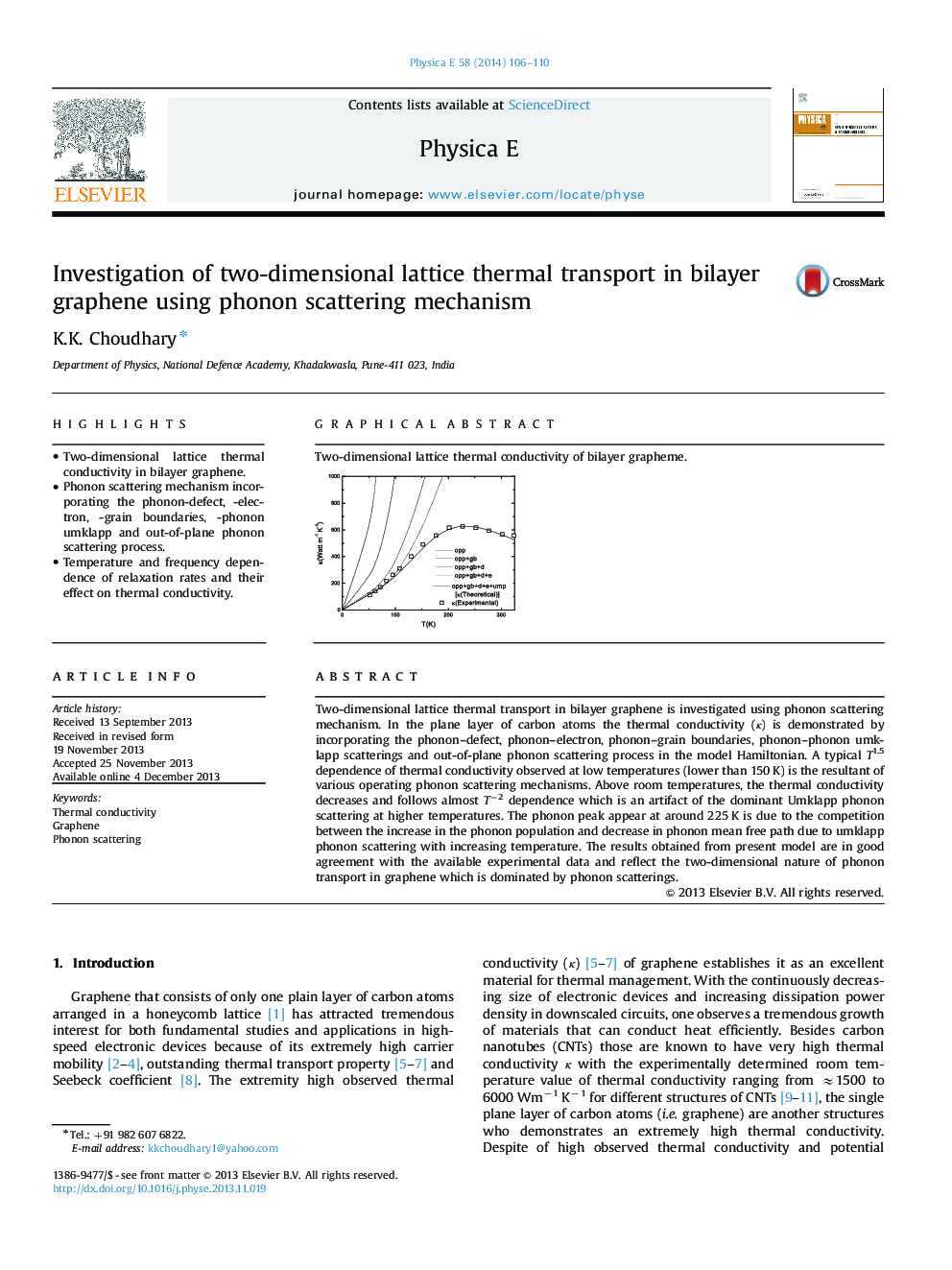| Article ID | Journal | Published Year | Pages | File Type |
|---|---|---|---|---|
| 1544647 | Physica E: Low-dimensional Systems and Nanostructures | 2014 | 5 Pages |
•Two-dimensional lattice thermal conductivity in bilayer graphene.•Phonon scattering mechanism incorporating the phonon-defect, -electron, -grain boundaries, -phonon umklapp and out-of-plane phonon scattering process.•Temperature and frequency dependence of relaxation rates and their effect on thermal conductivity.
Two-dimensional lattice thermal transport in bilayer graphene is investigated using phonon scattering mechanism. In the plane layer of carbon atoms the thermal conductivity (κ) is demonstrated by incorporating the phonon–defect, phonon–electron, phonon–grain boundaries, phonon–phonon umklapp scatterings and out-of-plane phonon scattering process in the model Hamiltonian. A typical T1.5 dependence of thermal conductivity observed at low temperatures (lower than 150 K) is the resultant of various operating phonon scattering mechanisms. Above room temperatures, the thermal conductivity decreases and follows almost T−2 dependence which is an artifact of the dominant Umklapp phonon scattering at higher temperatures. The phonon peak appear at around 225 K is due to the competition between the increase in the phonon population and decrease in phonon mean free path due to umklapp phonon scattering with increasing temperature. The results obtained from present model are in good agreement with the available experimental data and reflect the two-dimensional nature of phonon transport in graphene which is dominated by phonon scatterings.
Graphical abstractTwo-dimensional lattice thermal conductivity of bilayer grapheme.Figure optionsDownload full-size imageDownload as PowerPoint slide
